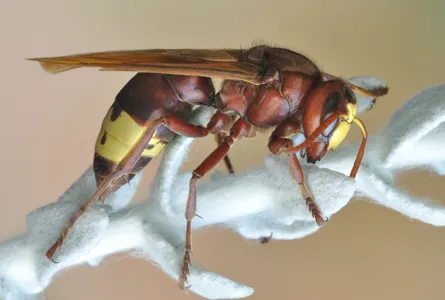- More than 2 years ago
The possibility that a hornet might be harvesting sunlight for energy has researchers abuzz. Scientists have constructed an electricity-generating solar cell using a pigment from the oriental hornet, a team reports in the December Naturwissenschaften — but much more evidence would be needed to link solar input to power output in the living beast.

Oriental hornets (Vespa orientalis) spend their days clearing soil from their underground nests to make room for nest expansion. While many wasps would go about such business in the cooler morning hours, previous research led by the late Jacob Ishay of Tel Aviv University noted that the nest-expanding activity peaks in sweltering midday. Experiments also showed that shining a light on the hornets generated voltage differences across their hard exoskeletons. These and other finds suggested that the hornets were maximizing exposure to sunlight. So Ishay’s doctoral student, Marian Plotkin, decided to further investigate the brown and yellow pigments on the insect’s cuticle.
Examination of the striped patch on the hornet’s backside revealed a microstructure that traps incoming light, preventing reflection. And when the researchers extracted a yellow pigment called xanthopterin from the hornet’s outer shell and plopped it into a solar cell that uses dyes to absorb light, the solar cell squeaked out some electricity.
The find is interesting but not surprising, says Andrew Parker of the Natural History Museum in London. The skins and shells of organisms from butterflies to diatoms can have complex microstructures that manipulate light. In some instances, such as a weevil with an opaline exoskeleton, this microstructure creates a brilliant color. Similar structures in other insects, such as the textured eyes of certain flies and moths that are active at dawn and dusk and need every available photon of light, may serve to maximize absorption.
The researchers have a long way to go to demonstrate that the oriental wasp is solar-powered, says Parker. The team hasn’t shown that xanthopterin is linked to production of ATP, the energy-storing molecule of cells. And any number of pigments might eke out some electricity if stuck in a dye-sensitized solar cell.
Even if it turns out that this wasp uses the sun in a more ordinary manner, the idea that insects might get an energy buzz from sunlight isn’t so farfetched. “Virtually everything that’s been engineered in the physics world,” Parker says, “turns up in nature.”






